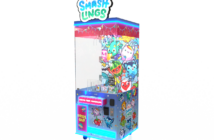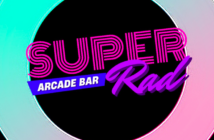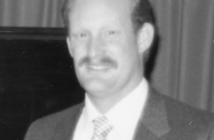By Eddie Adlum
For many legitimate reasons, most people consider Sega to be a Japanese company. But it was really formed by a broad collection of expatriates back in Tokyo in the 1950s whose combined activities in operating, importing, distributing and finally manufacturing went into a mix officially molded together and called “Sega” by 1960.
Sega’s pioneers included Marty Bromley, Dick Stewart, Ray Lemaire, Scott Dodderer and a guy from Brooklyn named David Rosen. Since the U.S. industry already had a Dave Rosen in Philadelphia back then, we called this new chap Sega Dave Rosen. He would become the American face of the company beginning in the late ’60s when he brought to America a huge submarine shooting attraction called Periscope.
I worked at Cash Box magazine back then, from an office on Broadway in New York, right up the Great White Way from an arcade that distributor Al Simon ran. I checked Periscope out and my first thought was how the heck do you get something this big crated and shipped all the way over from Japan? I had no idea at the time how many Sega games would be imported over the decades to come.
One of Rosen’s many talents was marketing, and he not only sold a surprising number of this made-in-Japan gun game but put it on 2-for-a-quarter play when most American games were set on dime play, 3-plays for 2-bits. When the first video games came out in 1973, single-quarter play began to arrive and a few years later, so did Sega’s Monaco GP driver – another hit for this upstart “Japanese” gamesmith.
Sega planted its manufacturing flag in the U.S. around the beginning of 1980 by buying a San Diego wall game manufacturer called Gremlin Games. (Gremlin was also famous for designing and building a maze video game called Blockade.) In June, Sega called its U.S. distributors to a meeting at their San Diego plant to greet a respectable new Gremlin upright called Carnival (video shooter). At a press briefing, Rosen was asked if the video “gold rush” was a staple situation in coin-op or just a flash in the pan. His response was typical long-range Japanese business thinking:
“I don’t think there’s a man here who won’t agree that business for good video games has never been better. But, it’s also necessary to remember that this industry is cyclical and before long, pinballs will be coming back strong. Right now, our eyes are on the state of the video game throughout 1980, 1981 and the things we intend to do to keep that favor among operators.”
The coin-op world had become dominated by video games by then, and Sega shelved Gremlin’s wall games and put video uprights like Xaxxon and other fine titles on the production line instead. The Gremlin brand name was discarded after a period and eventually, so was the San Diego factory when video’s boom days ended in the mid-80s, though Sega had its share of video hits during the boom.
Eventually, the company turned to more deluxe items like the Daytona 500 driver, along with motorcycle games like Hang On. Such large attractions, along with merchandising machines, dominate their menu today.



